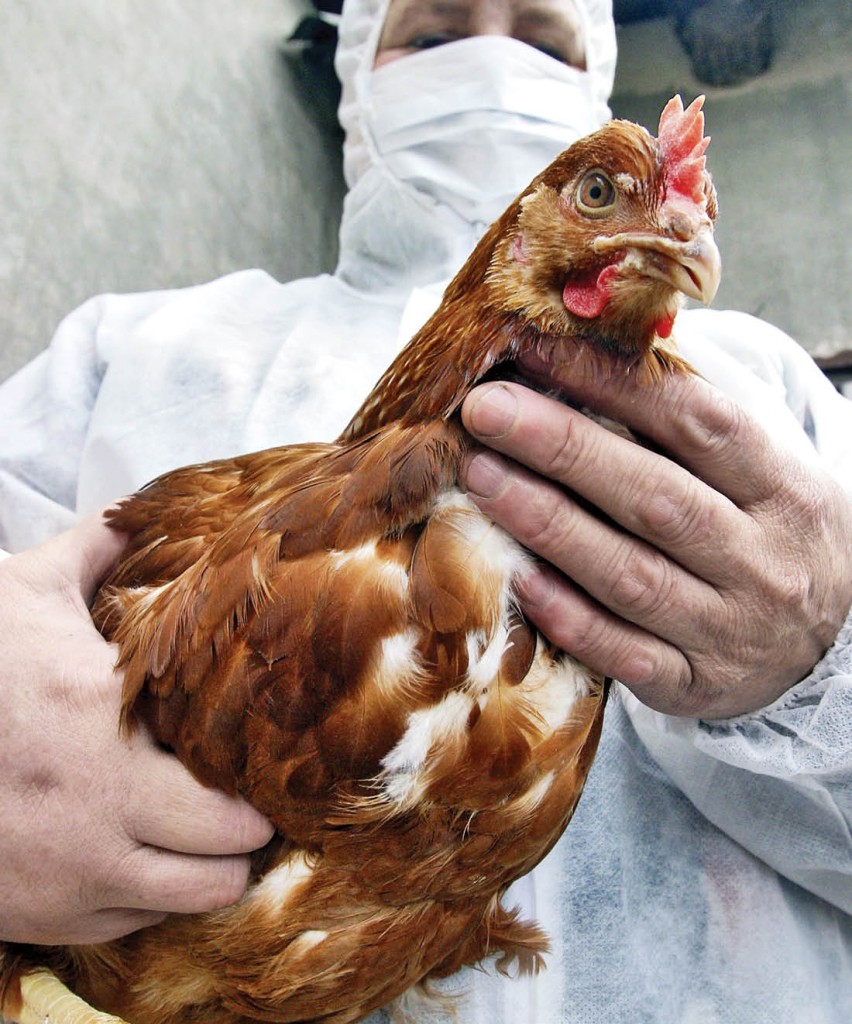Researchers Stalk Deadly Flu Viruses Using New Weapons
The high mortality rate of a new strain of bird flu that emerged in China last spring has caused the Centers for Disease Control and Prevention to issue provider alerts to watch for flu-like illness in recent travelers and prompted vaccine scientists to find ways to protect the public should an outbreak in humans occur. So far 135 cases of illness and 44 deaths have been reported in what is currently characterized as an isolated outbreak of H7N9 influenza in Eastern China.

Vanderbilt’s Vaccine and Treatment Evaluation Unit (VTEU) is one of nine U.S. sites funded by the National Institute of Allergy and Infectious Diseases to test effectiveness of a vaccine to protect against the H7N9 bird flu. Dr. Kathryn Edwards, the Sarah H. Sell and Cornelius Vanderbilt Professor of Pediatrics, is director of the Vanderbilt Vaccine Research Program and principal investigator of the VTEU. She says that testing vaccines aimed at this new influenza will be critical in protecting against the illness in adults.
“H7N9 has spread from birds to people and, in at least one confirmed case, from one person to another,” Edwards says. “Once efficient person-to-person transmission occurs, widespread infection is just around the corner. Currently, this influenza strain has a 30 percent mortality rate, so the stakes are very high.”
Two concurrent Phase II clinical trials are designed to gather safety and dosing information for the candidate vaccine. The trial being conducted at the Vanderbilt VTEU will enroll up to 1,000 adults nationally who are 19 to 64 years old and in good health. It will also study the vaccine with or without adjuvants, substances designed to boost the body’s immune response to vaccination.
“In general, the immune response to bird flu vaccines is much less than to seasonal flu vaccines; therefore, these studies will be very important for us to understand how to protect people in the event it spreads across the globe,” says Dr. Buddy Creech, MD’99, assistant professor of pediatrics, assistant director of the vaccine research program, and co-principal investigator of the Vanderbilt VTEU.
Sites in addition to the Vanderbilt VTEU are St. Louis University, Baylor University College of Medicine (Houston), Children’s Hospital Medical Center (Cincinnati), Emory University (Atlanta), Group Health Cooperative (Seattle), University of Iowa (Iowa City), and University of Maryland (Baltimore). The University of Texas Medical Branch at Galveston also will conduct the trial as a subcontractor to Baylor College of Medicine.
H7N9 is just one strain of bird flu that Vanderbilt researchers are working to understand. Another is H5N1 avian influenza virus, which since 2003 has produced 630 confirmed cases, including 375 deaths, according to the World Health Organization. H5N1 does not yet seem to transmit from person to person in nature, only directly from birds to people. However, in 2010, scientists in the Netherlands and at the University of Wisconsin found that when H5N1 avian influenza was passaged intentionally in the lab from ferret to ferret, the deadly virus could acquire aerosol transmissibility.
The work stirred fears in the scientific community of potential use of this information for bioterrorist purposes and led to the unusual step of journals temporarily withholding publication of the research. The sequences of the transmissible viruses eventually were published in the journals Science and Nature. Now, Vanderbilt research has produced reassuring results that address some fears about the pandemic power of avian influenza viruses created in research labs. The work, published online Sept. 3 in the Journal of Clinical Investigation, shows that human antibodies to the natural strain of H5N1, induced in volunteers during experimental H5N1 vaccine testing, are able to kill the potentially more dangerous laboratory-created strain of the avian flu.
“The work we did was made possible only by the publication of the controversial sequences,” says Natalie J. Thornburg, a scientist in the Vanderbilt laboratory of Dr. James E. Crowe Jr., first author of the publication. “The publications identified the mutations, and we were then able to go back and engineer them into our recombinant protein to determine if our antibodies might be effective against such aerosol transmissible viruses.”
Researchers on the team did not use the viruses themselves; they used a noninfectious synthetic protein and added the controversial viral mutation sequences to the surface of the protein. This allowed the Crowe laboratory to study the effect of the mutations in viral structures safely through finely tuned experiments.
Because Vanderbilt is home to a National Institutes of Health-funded Vaccine and Treatment Evaluation Unit, Crowe’s team was able to ask participants previously involved in an H5N1 vaccine trial to return and supply blood cells to the laboratory for isolation of antibodies they had produced in response to the vaccine. “Fortunately, we discovered the antibodies we isolated from subjects immunized with the existing vaccine also would neutralize strains that had these specific new mutations,” Thornburg says.
Crowe, director of the Vanderbilt Vaccine Center, holds the Ann Scott Carell Chair and is a professor of pediatrics, pathology, microbiology and immunology. He says a release of critical information from the 2010 research, in combination with highly developed biotechnology used in his laboratory, shows this type of work can continue to inform vaccine and treatment development, even for pandemics that do not yet exist.
“Our images show that the antibodies are able to reach down into a protected area of the virus to bind to and neutralize it, despite the changes made in structure of the virus in an adjacent area,” says Crowe. “These findings provide important information about immunity to these new viruses, and in this case the information is also reassuring.”